Note: The first novel in this series, called Moonlight Downs in the US and Diamond Dove in the UK was WINNER of Australia’s Ned Kelly Award in 2007.
“You can’t see the change in something if you don’t know what it looked like in the first place, but if you stay out here long enough, you’ll understand. I’m only a beginner myself, but I’ve been round long enough to know that things interconnect—deaths and dreams, watercourses, tracks and plants. Everything.”—Emily Tempest to Police Sergeant.
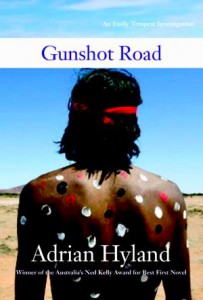 Newly appointed Aboriginal Community Police Officer Emily Tempest has returned to her roots in Bluebush – in the Northern Territories of Australia – after more than ten years spent traveling the world. The daughter of Motor Jack, a white geologist/gold prospector and an aborigine mother, she grew up in her mother’s culture until she was a teenager and has always felt more comfortable there, despite the educational programs and travels which later took her all over the world. Having returned to live with “her” people when she is in her twenties, she continues to resent the intrusions of the “civilized” white world and the damage it has caused to the natural world venerated by the aborigines. Having won their claim to their ancestral lands (in author Adrian Hyland’s previous novel, Moonlight Downs), the community, Emily notes, has “taken the first tentative steps to independence: built a few rough houses, put in a water supply, planted an orchard…and started a cattle project, [and] there was talk of a school, a store, a clinic.” Life seems to have improved somewhat from the previous novel, at least as far as physical comforts are concerned.
Newly appointed Aboriginal Community Police Officer Emily Tempest has returned to her roots in Bluebush – in the Northern Territories of Australia – after more than ten years spent traveling the world. The daughter of Motor Jack, a white geologist/gold prospector and an aborigine mother, she grew up in her mother’s culture until she was a teenager and has always felt more comfortable there, despite the educational programs and travels which later took her all over the world. Having returned to live with “her” people when she is in her twenties, she continues to resent the intrusions of the “civilized” white world and the damage it has caused to the natural world venerated by the aborigines. Having won their claim to their ancestral lands (in author Adrian Hyland’s previous novel, Moonlight Downs), the community, Emily notes, has “taken the first tentative steps to independence: built a few rough houses, put in a water supply, planted an orchard…and started a cattle project, [and] there was talk of a school, a store, a clinic.” Life seems to have improved somewhat from the previous novel, at least as far as physical comforts are concerned.
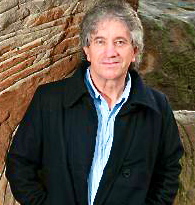 Hyland himself spent many years living and working with the indigenous people in the Northern Territories, and he vividly recreates aborigine family life, which is still nomadic and hand-to-mouth in many communities. The young people are easily attracted to alcohol and drugs, readily available in towns, more than they are to schools and to the traditional values of their elders, and the unemployment rate is stratospheric. In this second novel in the Emily Tempest series, little seems to have changed in the racial attitudes of the “whitefellers” toward the aborigines, with many police investigations, as Emily quickly sees, guided more by what investigators still expect than by what any evidence actually shows. A smart woman, as hard as the local rocks and geological strata that have attracted opportunistic miners from all over the world, Emily can also be as quixotic and mysterious as the spirits which she and her people believe move in and out of their lives, keeping the forces of nature in balance. “Say what you like about me and my mob,” she announces, “there’s one thing you can’t deny: we’re survivors. You can kick us and kill us and drown us in bible and booze, but you better get used to us because we’re not going away.”
Hyland himself spent many years living and working with the indigenous people in the Northern Territories, and he vividly recreates aborigine family life, which is still nomadic and hand-to-mouth in many communities. The young people are easily attracted to alcohol and drugs, readily available in towns, more than they are to schools and to the traditional values of their elders, and the unemployment rate is stratospheric. In this second novel in the Emily Tempest series, little seems to have changed in the racial attitudes of the “whitefellers” toward the aborigines, with many police investigations, as Emily quickly sees, guided more by what investigators still expect than by what any evidence actually shows. A smart woman, as hard as the local rocks and geological strata that have attracted opportunistic miners from all over the world, Emily can also be as quixotic and mysterious as the spirits which she and her people believe move in and out of their lives, keeping the forces of nature in balance. “Say what you like about me and my mob,” she announces, “there’s one thing you can’t deny: we’re survivors. You can kick us and kill us and drown us in bible and booze, but you better get used to us because we’re not going away.”
 Filled with atmosphere, local color, and nonstop action, the novel opens with a gruesome attack at Green Swamp Well, in which a drunk, elderly prospector is found with his hammer embedded in his throat. Another prospector, also drunk, found asleep near the body, is arrested. When Emily discovers that the dead man is Doc, an old friend of her father whom she has known since childhood, and that the supposed killer is Wireless, another old friend, she is determined to help. Doc believed that Martians, devils, the CIA, and missionaries were all out to get him, b
Filled with atmosphere, local color, and nonstop action, the novel opens with a gruesome attack at Green Swamp Well, in which a drunk, elderly prospector is found with his hammer embedded in his throat. Another prospector, also drunk, found asleep near the body, is arrested. When Emily discovers that the dead man is Doc, an old friend of her father whom she has known since childhood, and that the supposed killer is Wireless, another old friend, she is determined to help. Doc believed that Martians, devils, the CIA, and missionaries were all out to get him, b ut he was an educated former employee of the Geological Survey, and his shack is filled with books, files, and hand-drawn maps. He had been recreating mysterious geological formations in his backyard, and he and Wireless had been arguing about Zeno’s Paradox. Both have lived by their own rules, and Emily believes that Wireless, who remembers nothing about the killing, will die if he is shut up in prison.
ut he was an educated former employee of the Geological Survey, and his shack is filled with books, files, and hand-drawn maps. He had been recreating mysterious geological formations in his backyard, and he and Wireless had been arguing about Zeno’s Paradox. Both have lived by their own rules, and Emily believes that Wireless, who remembers nothing about the killing, will die if he is shut up in prison.
As the mystery of who killed Doc, and why, develops, the author introduces characters from the past, and a variety of new characters who appear and reappear throughout, each trailing his/her own story behind. Danny Brambles, a fifteen-year-old aborigine, has problems with alcohol and drugs, and he cannot seem to stay out of trouble, but Emily believes that if he rejoins his 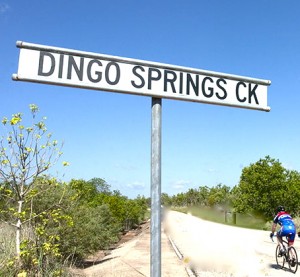 family in the bush that he will develop the inner resources he needs to stay clean and become productive. Doc’s brother, Wishy Ozolins, his wife, and their three well-individualized daughters play a role and show their family dynamics, and when Wishy claims Doc’s files, he is perturbed that a major file on the Snowball Earth Theory is missing. Emily’s lover, Jojo, who has been doing research on the endangered bilby in the outback, reappears periodically, always offering support without infringing on Emily’s need for independence. Sgt. Bruce Cockburn, Emily’s boss, shows his ignorance of other cultures, expressing his feelings of superiority as he directs investigations or fails to investigate the important issues when Emily feels that “Something’s out of place. Something’s wrong.” His family, too, plays a role in the action. An assortment of other characters, many of them working on mines, expands the focus on the geology of the area and the conflicts between t
family in the bush that he will develop the inner resources he needs to stay clean and become productive. Doc’s brother, Wishy Ozolins, his wife, and their three well-individualized daughters play a role and show their family dynamics, and when Wishy claims Doc’s files, he is perturbed that a major file on the Snowball Earth Theory is missing. Emily’s lover, Jojo, who has been doing research on the endangered bilby in the outback, reappears periodically, always offering support without infringing on Emily’s need for independence. Sgt. Bruce Cockburn, Emily’s boss, shows his ignorance of other cultures, expressing his feelings of superiority as he directs investigations or fails to investigate the important issues when Emily feels that “Something’s out of place. Something’s wrong.” His family, too, plays a role in the action. An assortment of other characters, many of them working on mines, expands the focus on the geology of the area and the conflicts between t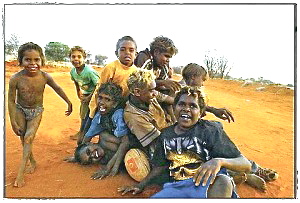 he educated and uneducated, the whites and the blacks, and the men and the women. As morally bankrupt entrepreneurs gravitate to the gold and mineral wealth of the area with their strike-it-rich schemes, it is those with strong ties to family and culture, it seems, who are most likely to survive.
he educated and uneducated, the whites and the blacks, and the men and the women. As morally bankrupt entrepreneurs gravitate to the gold and mineral wealth of the area with their strike-it-rich schemes, it is those with strong ties to family and culture, it seems, who are most likely to survive.
Hyland does not sugar-coat any aspect of life in the outback. His characters are coarse, and the action and language are sometimes even coarser. Shootings, explosions, rock falls, attempted murders, a brutal rape, and chase scenes take place even as the author is raising questions about conservation, environmental threats, and the serious problems facing indigenous communities. Aspects of the supernatural, and characters’ occasional dream sequences, exist side-by-side with earthy scenes of brutality and ignorance. The novel wanders freely, introducing such a variety of different charac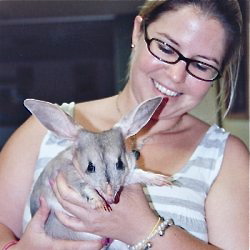 ters, their interactions, and subplots that it is sometimes difficult to identify the main themes and main plot line. Even Emily herself is sometimes so unpredictable in her behavior that she is difficult to figure. Still, for those interested in this fascinating setting and its close-up on those aborigines who must exist in close proximity to a completely alien world and way of life, it offers new insights and understandings and does so with enthusiasm and respect.
ters, their interactions, and subplots that it is sometimes difficult to identify the main themes and main plot line. Even Emily herself is sometimes so unpredictable in her behavior that she is difficult to figure. Still, for those interested in this fascinating setting and its close-up on those aborigines who must exist in close proximity to a completely alien world and way of life, it offers new insights and understandings and does so with enthusiasm and respect.
ALSO by Hyland: MOONLIGHT DOWNS (known in the UK as DIAMOND DOVE).
Photos, in order: The author’s photo is from http://www.perthnow.com.au
Rock formations like these were studied by Doc. http://goaustralia.about.com
Doc gave Emily a fossilized trilobyte, pictured here, which she eventually gives to Tiger Lily, his niece. http://www.etsy.com
Dingo Springs is the site of some of the action in the novel. http://www.pedal4prostate.com
The photo of aboriginal children, by John Donegan, accompanies a story about them here: http://www.theage.com.au
The endangered bilby, a rodent studied by Jojo, may be seen here: http://www.squidoo.com
